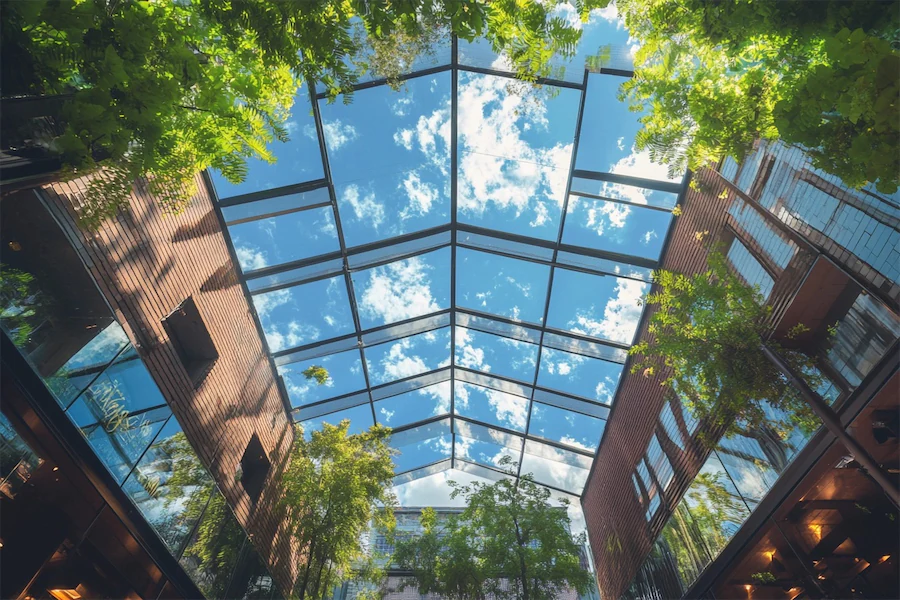A retractable roof is an architectural feature designed to move, allowing a structure to alternate between an open-air and enclosed environment. This adaptability enables occupants to enjoy natural sunlight and ventilation when conditions are favorable, and to be protected from adverse weather when necessary. Retractable roofs are commonly utilized in various settings, including sports stadiums, residential properties, restaurants, and entertainment venues.
History and Origins of Retractable Roofs
The concept of retractable roofs dates back to the mid-20th century. In August 1963, David S. Miller, founder of Rollamatic Retractable Roofs, filed a patent for “a movable and remotely controllable roof section for houses and other types of buildings.” This innovation laid the groundwork for modern retractable roof systems. The first retractable roof sports venue was the Civic Arena in Pittsburgh, Pennsylvania, constructed in 1961. Originally built for the Pittsburgh Civic Light Opera, the arena featured a dome-shaped roof composed of eight segments, six of which could retract underneath the remaining two, allowing for an open-air experience.
Key Features of Retractable Roofs
- Flexibility: Retractable roofs provide the option to open or close the roof, offering versatility in response to weather conditions and user preferences.
- Advanced Control Systems: Modern retractable roofs often incorporate sophisticated control mechanisms, including environmental sensors that automatically operate the system in response to rain or sunlight.
- Material Variety: These roofs can be constructed from various materials, such as metal, fabric, or polycarbonate panels, each offering different aesthetic and functional benefits.
Applications of Retractable Roofs
- Sports Venues: Stadiums and arenas utilize retractable roofs to host events regardless of weather conditions, enhancing spectator comfort and protecting the playing surface. For example, the Centre Court at Wimbledon features a retractable roof that allows matches to continue during rain, taking approximately 10 minutes to close.
- Residential Spaces: Homeowners install retractable roofs over patios, pools, or courtyards to create adaptable outdoor living areas that can be enjoyed year-round.
- Commercial Establishments: Restaurants, bars, and hotels incorporate retractable roofs to offer guests an open-air experience when desired, while ensuring protection from elements like rain or excessive sun.
Considerations When Choosing a Retractable Roof
- Design and Aesthetics: The retractable roof should complement the existing architecture and meet the functional needs of the space. Options include various configurations, such as bi-parting systems where the roof opens from the center, with each half retracting in opposite directions.
- Material Selection: Choosing the appropriate materials is crucial, as it affects the roof’s durability, maintenance requirements, and suitability for the building’s purpose. Options include metal panels, fabric, and polycarbonate.
- Climate Considerations: The roof system should be designed to withstand local weather conditions, including wind, snow, and temperature variations, to ensure longevity and performance.
- Budget Constraints: While retractable roofs can offer cost savings through reduced labor and construction time, it’s important to assess the overall budget, including transportation and installation costs.
Conclusion
Retractable roofs represent a significant advancement in architectural design, offering flexibility and functionality across various applications. By allowing spaces to seamlessly transition between open-air and enclosed environments, they enhance user experience and adapt to changing weather conditions. Careful consideration of design, materials, climate, and budget is essential to selecting a retractable roof system that meets specific needs and ensures long-term performance.
